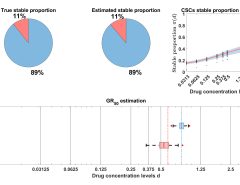Authors: Yipei Wang, Bing He, Shannon Risacher, Andrew Saykin, Jingwen Yan, Xiaoqian Wang
Published on: March 10, 2024
Impact Score: 7.6
Arxiv code: Arxiv:2403.06087
Summary
- What is new: A novel regularization approach to predict AD longitudinally with a monotonicity constraint.
- Why this is important: Existing AD classification techniques ignore the monotonically increasing risk across follow-up visits, leading to fluctuating risk scores that contradict the irreversible nature of AD.
- What the research proposes: The proposed technique introduces a novel regularization approach with a monotonicity constraint to ensure disease risk predictions across follow-up visits are consistent and ordered.
- Results: The model demonstrates improved capability in capturing the progressiveness of disease risk while maintaining prediction accuracy, using longitudinal structural MRI and amyloid-PET imaging data.
Technical Details
Technological frameworks used: nan
Models used: Machine learning models with a novel regularization technique
Data used: Longitudinal structural MRI and amyloid-PET imaging data from the ADNI
Potential Impact
Healthcare providers, insurance companies, and biotech firms involved in the early diagnosis and treatment of Alzheimer’s disease could benefit from these insights.
Want to implement this idea in a business?
We have generated a startup concept here: MonoPredict AD.



Leave a Reply